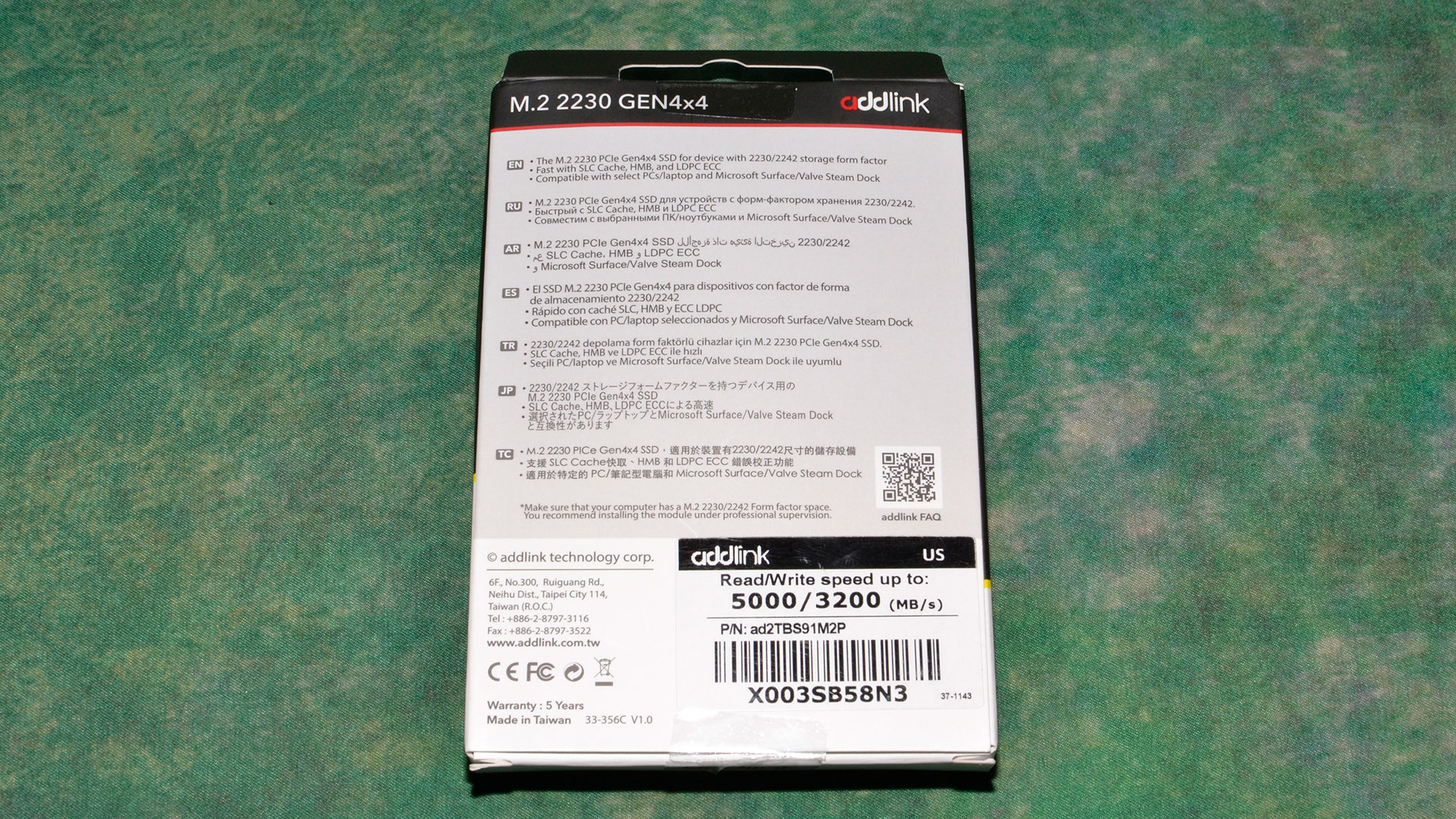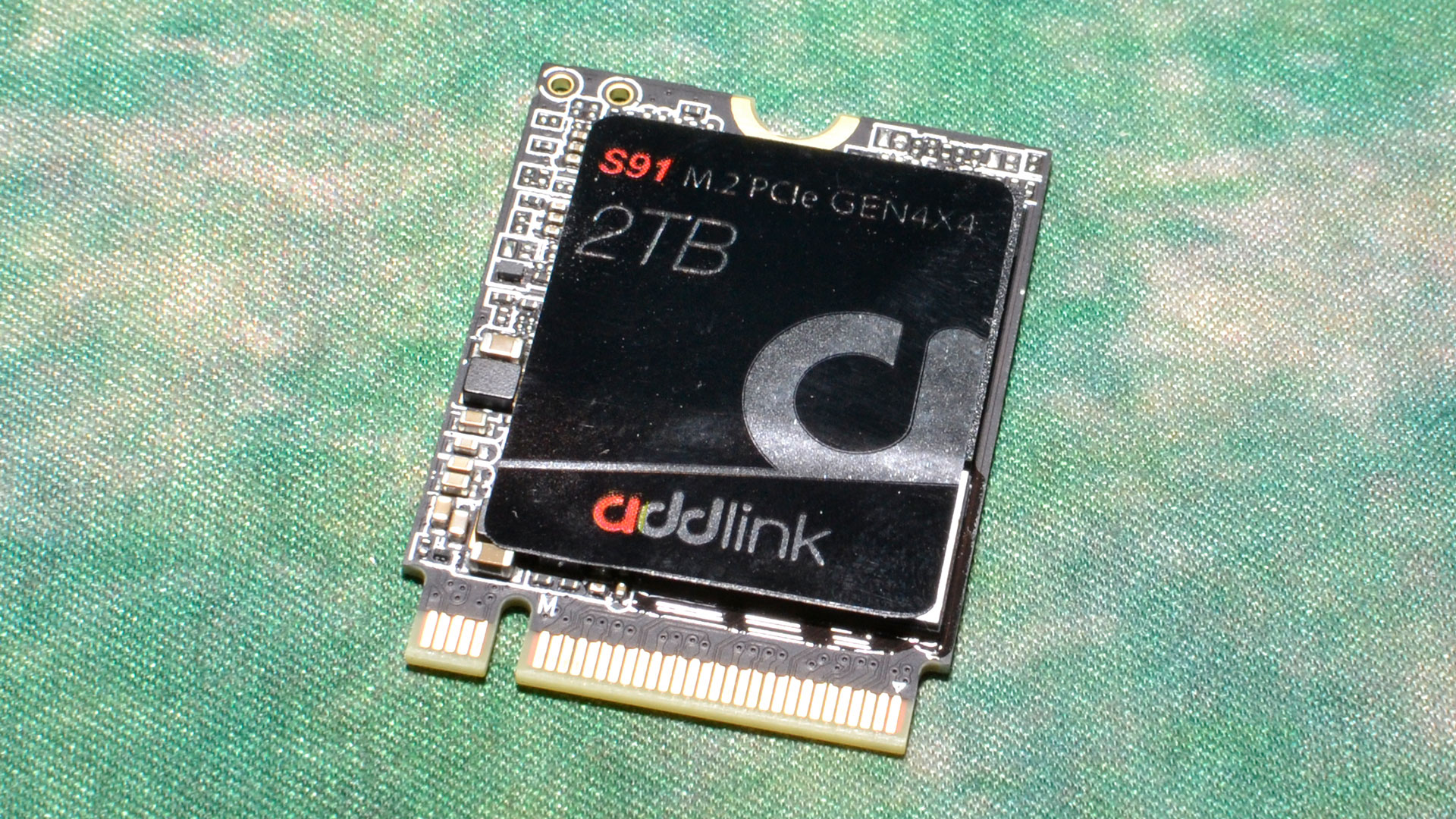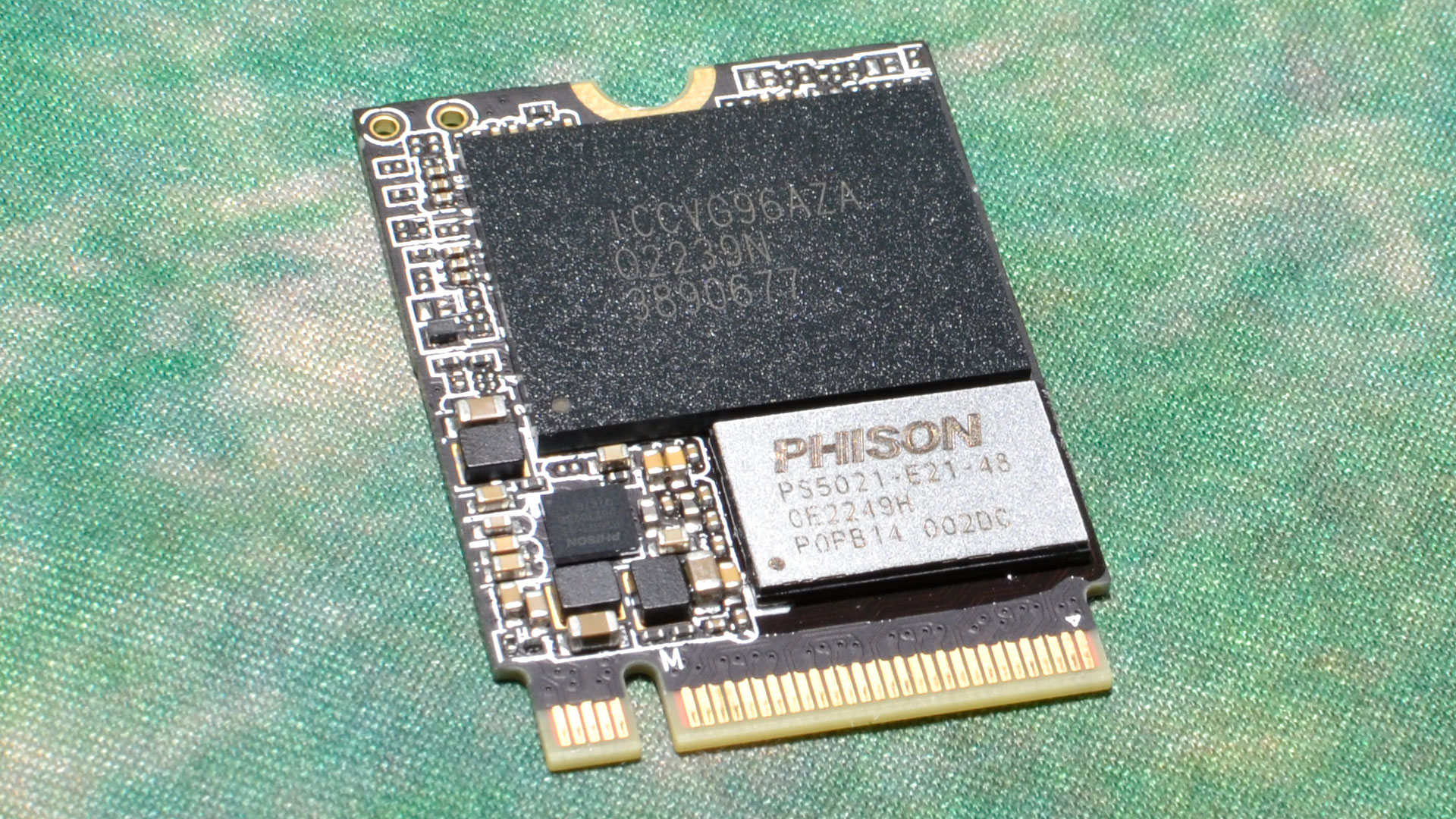Tom's Hardware Verdict
The Addlink S91 is not a bad choice if you want 2TB for your Steam Deck or ROG Ally’s internal storage. The drive performs well enough, especially with a PCIe 3.0 interface, with good efficiency, and even has TLC flash at 512GB. The 2TB model's QLC does have some downsides.
Pros
- +
2TB in the M.2 2230 form factor
- +
Available in three capacities
- +
PCIe 3.0 performance is certainly good enough (Steam Deck)
Cons
- -
QLC, so very weak sustained performance and weaker peak
Why you can trust Tom's Hardware
More is usually better, and boosting your Steam Deck up to 2TB of fast internal storage is now easier than ever. You may not have heard of Addlink, but they are an established SSD brand and often offer better pricing for the same hardware you find from better-known brands. The S91 is one of those special drives that you can pick up to upgrade your Steam Deck, ROG Ally, or other M.2 2230-requiring system with the right tools and a good guide. The possibility of having this much capacity with NVMe performance on the go, what’s not to like?
The 2TB Addlink S91's performance is relatively good, particularly when run at the Steam Deck’s PCIe 3.0 speed, and the drive is quite efficient. Addlink backs it with a five-year warranty, although overall support may not be as good as you'll find with the Sabrent Rocket Q4 2230. That’s okay, as the S91 is currently a bit less expensive. At 1TB, the S91 has stiffer competition, but you can save some money if you’re willing to go with the S91's QLC flash over a TLC contender. The S91 uses TLC for the 512GB model, but a drive like the Inland TN446 is a better bet.
We think a QLC drive like the Addlink S91 or Rocket Q4 2230 makes sense at 2TB in this form factor. Just be aware that write performance may tank after the initial installation process, and leaving some space free is a good idea to improve performance. At 1TB, it is harder to recommend the S91, but it could be a budget option if money is tight. Let's see how it stacks up.
Specifications
| Product | 512GB | 1TB | 2TB |
|---|---|---|---|
| Pricing | $52.88 | $84.88 | $199.88 |
| Form Factor | M.2 2230 | M.2 2230 | M.2 2230 |
| Interface / Protocol | PCIe 4.0 x4 / NVMe 1.4 | PCIe 4.0 x4 / NVMe 1.4 | PCIe 4.0 x4 / NVMe 1.4 |
| Controller | Phison E21T | Phison E21T | Phison E21T |
| DRAM | N/A (HMB) | N/A (HMB) | N/A (HMB) |
| Memory | Kioxia 112-Layer TLC (BiCS5) | Micron 176-Layer QLC | Micron 176-Layer QLC |
| Sequential Read | 3,500 MB/s | 4,900 MB/s | 5,000 MB/s |
| Sequential Write | 2,300 MB/s | 3,200 MB/s | 3,200 MB/s |
| Random Read | 400K | 570K | 480K |
| Random Write | 550K | 750K | 750K |
| Security | N/A | N/A | N/A |
| Endurance (TBW) | 300TB | 250TB | 450TB |
| Part Number | ad512GBS91M2P | ad1TBS91M2P | ad2TBS91M2P |
| Warranty | 5-Year | 5-Year | 5-Year |
The Addlink S91 is available in 512GB, 1TB, and 2TB capacities. It performs up to 5,000 / 3,200 MB/s for sequential reads and writes and up to 570K / 750K random read and write IOPS. All capacities are warrantied for five years and can absorb 300TB, 250TB, and 450TB of writes, respectively. Current pricing has decreased during the review's writing to $52.88, $84.88, and $199.88, respectively.
This pricing is somewhat competitive, but the 512GB Inland TN446 at $49.99 is probably the better deal. At 1TB, the S91 saves you a little money if you want to go with QLC over TLC. At 2TB, it’s one of the less expensive QLC options.
Software and Accessories
Addlink does not provide cloning/imaging software with this SSD, but a downloadable SSD toolbox is available on Addlink’s site. We recommend using free, third-party applications for cloning and imaging.
A Closer Look




The Addlink S91 is your typical, DRAM-less M.2 2230 SSD. It has an SSD controller, a single NAND package, and a PMIC. It’s single-sided to ensure it will fit in embedded devices.
Get Tom's Hardware's best news and in-depth reviews, straight to your inbox.


The flash, labeled ICCVG96AZA, is Micron’s 176-Layer QLC (N48R). This is the same flash on the Sabrent Rocket Q4 2230. Packing 2TB into a single package requires 16 1Tb dies (HDP), which is the typical limit.
The S91 deviates from other existing M.2 2230 SSDs we’ve tested at 512GB. Here it uses Kioxia’s 112-Layer TLC (BiCS5) instead of QLC. Due to the lower-than-expected performance specifications, I had expected either QLC or BiCS5 TLC at 512GB. When I asked, it was confirmed that it uses BiCS5. This is the same flash on the Inland TN436 and WD SN740. It may be slower due to less internal interleaving. Additionally, it may be less efficient due to the lack of CMOS under Array (CuA) and from being of an older flash generation. This does not apply at 1TB or 2TB, where the S91 uses Micron’s QLC. This is why the TN446, which has 176-Layer Micron TLC, is probably the better option at 512GB.
MORE: Best SSDs
MORE: Best External SSDs and Hard Drives
MORE: How We Test HDDs And SSDs
MORE: All SSD Content

Shane Downing is a Freelance Reviewer for Tom’s Hardware US, covering consumer storage hardware.
-
Yeshwant Kethineni Hi, will we see a NM790 (ideally 4TB) review soon?Reply
TPU's efficiency numbers look decent for the price -
DaveLTX The key thing to remember is that any sort of writing QLC is just far less efficient. Even if working from cache, the controller has to spend time moving from pSLC to QLC, which takes considerably longer than TLCReply
Dramless TLCs then are the most efficient without any performance hit
A older controller combined with QLC is worst possible combination of course
Hoping to see 2230 TLC based on maxio controllers -
Yeshwant Kethineni Reply
there are DRAM drives that are competitive efficiency-wise though, but yeah thanks I never thought of thatDaveLTX said:The key thing to remember is that any sort of writing QLC is just far less efficient. Even if working from cache, the controller has to spend time moving from pSLC to QLC, which takes considerably longer than TLC
Dramless TLCs then are the most efficient without any performance hit
A older controller combined with QLC is worst possible combination of course
Hoping to see 2230 TLC based on maxio controllers